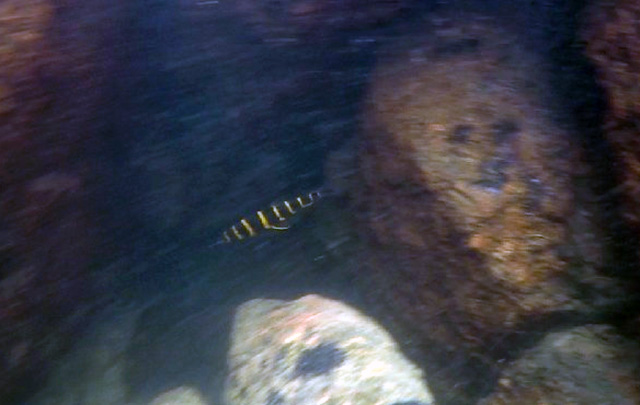| Anostomidae (Headstanders) |
| 12.79 cm SL (male/unsexed) |
|
benthopelagic; freshwater |
| South America: Brazil (Xingu and Tapajós rivers). |
|
This species is distinguished from all its congeners except desmotes, jatuncochi, enyae by having a laterally compressed, elongate (more than twice as long as the second dentary tooth) tusk-like symphyseal dentary teeth (vs. the more truncate conical or incisiform teeth; less than twice as long as the second dentary tooth, typical of other congeners; differs from its congeners except bleheri, desmotes, enyae, jatuncochi, yophorus by the color pattern on the head and trunk consisting of 9 dark bars, some of which fork dorsally or ventrally, the fifth of which continues onto the dorsal and pelvic fins, (vs. various other color patterns in the approximately 90 other described species of Leporinus; differs most easily from jatuncochi and some specimens of desmotes by having 16 circumpeduncular scales (vs. 14); differs from enyae by having the dark bar anterior to the dorsal fin well-divided dorsally (vs. bar undivided or barely divided dorsally); similar in meristics and coloration to desmotes by having 16 circumpeduncular scales, but differs morphometrically with the most diagnostic are the shallower body depth of villasboasorum, 23.0-24.9% SL (vs. 25.1-28.9% SL) and the shorter distance from the pelvic-fin origin to adipose-fin origin 36.3-38.6% SL (vs. 38.5-43.4% SL) with the regression lines differing greatly between the species (Ref. 119688). |
|
|
Not Evaluated (N.E.) Ref. (130435)
|
| harmless |
|
Source and more info: www.fishbase.org. For personal, classroom, and other internal use only. Not for publication.

